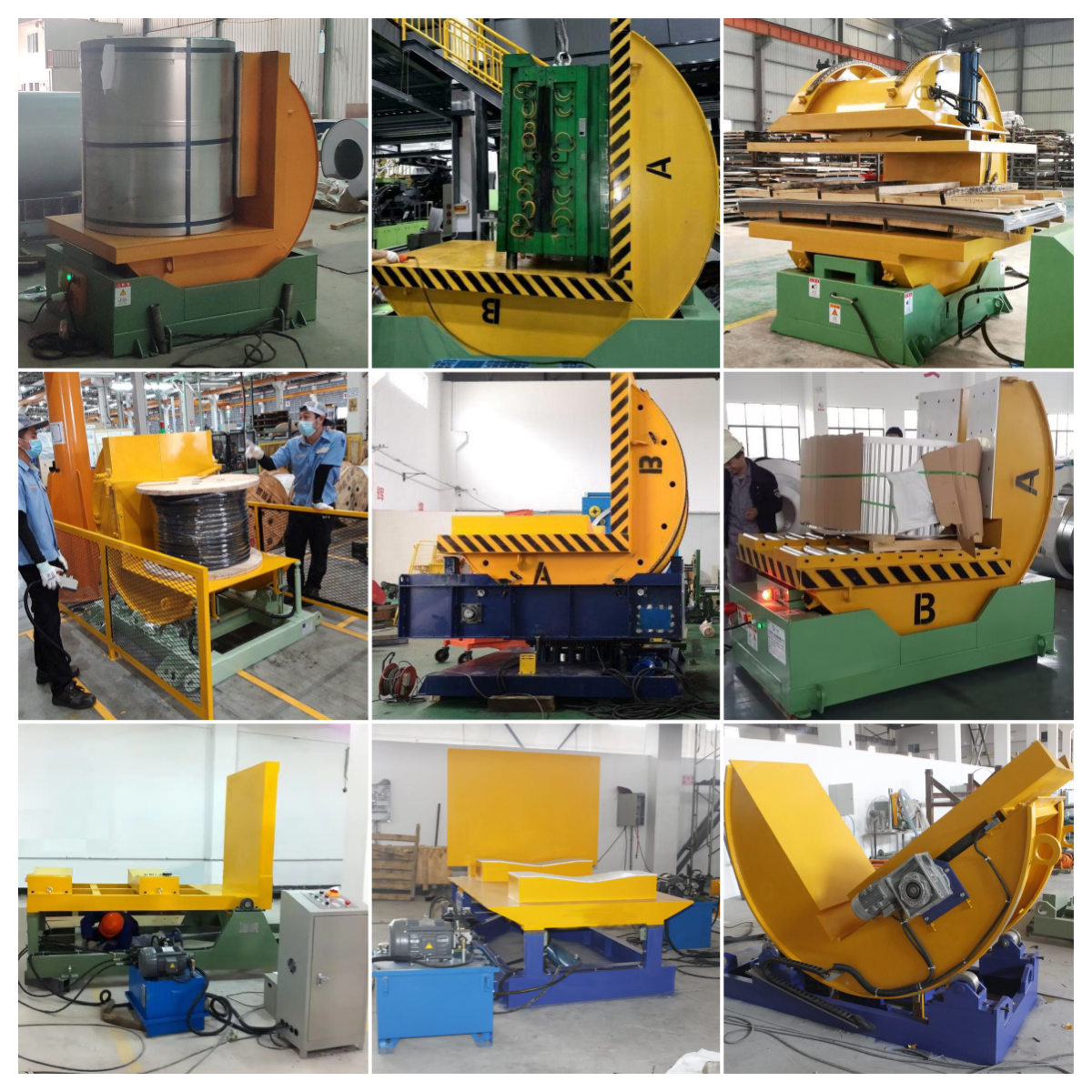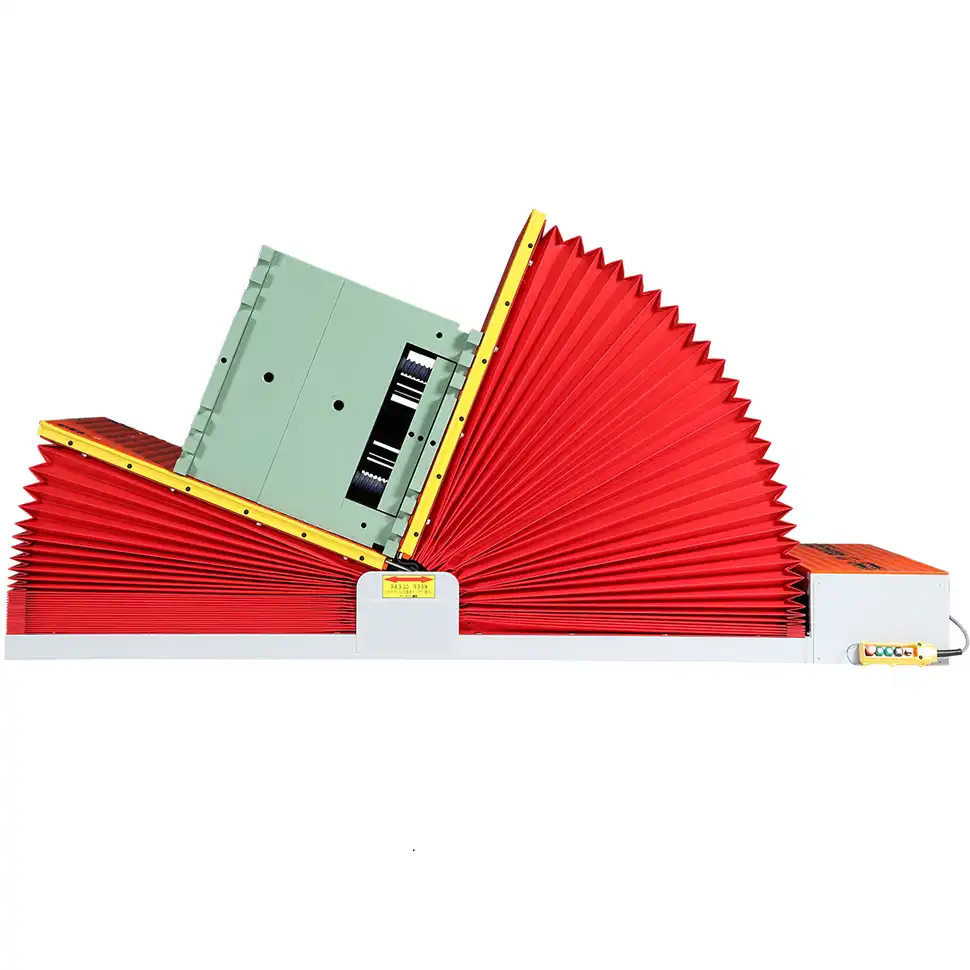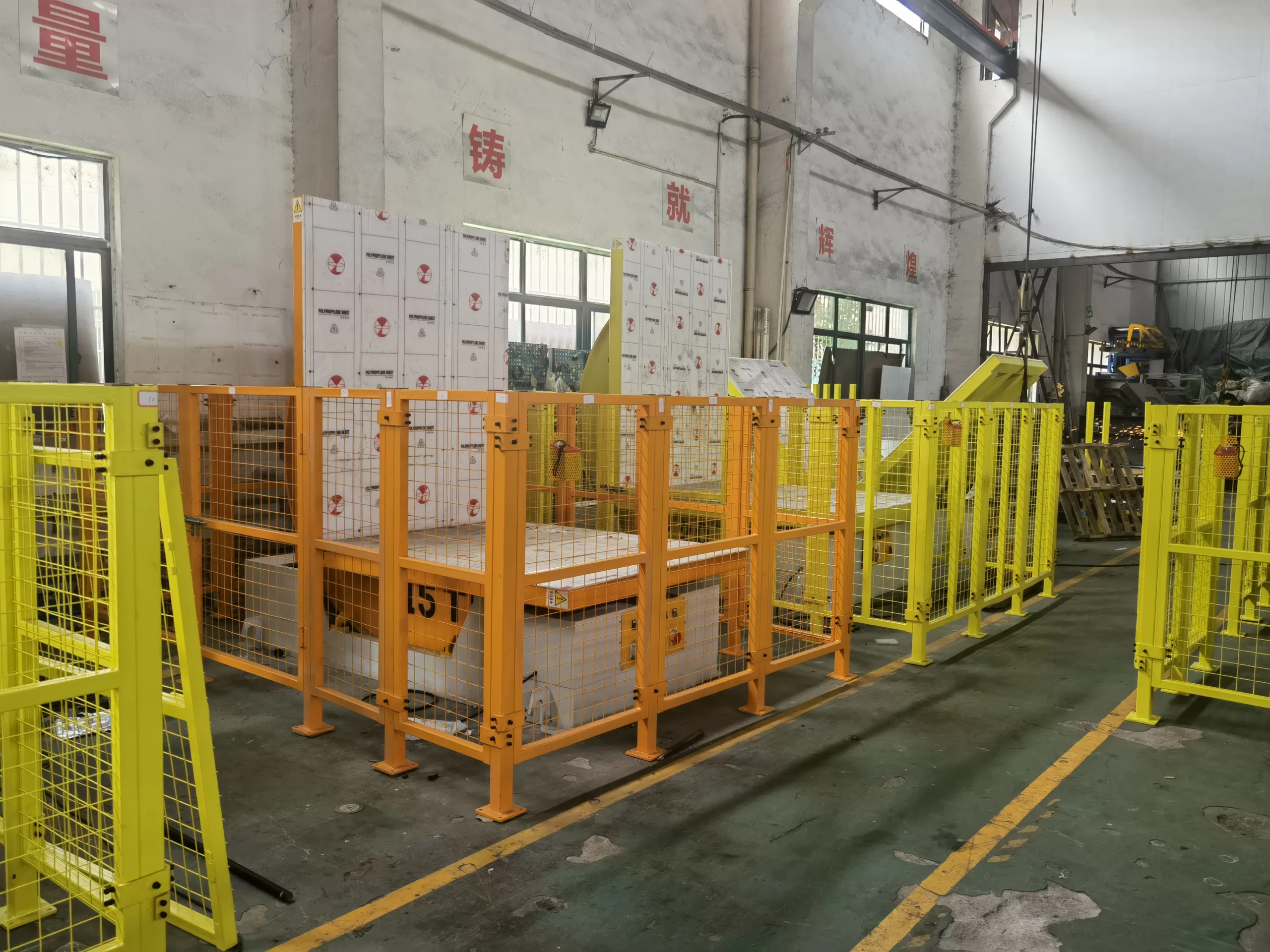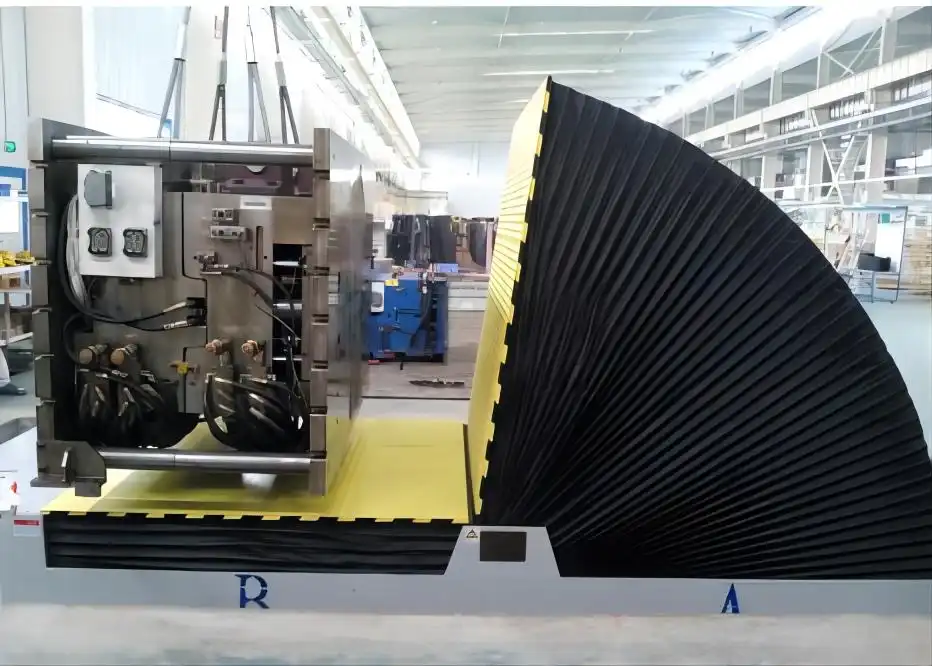How Can Colombian Factories Eliminate Manual Risks in Mold Handling?
In my years visiting factories across Latin America, I've seen incredible innovation. But I also see a persistent problem. In many Colombian plants, dedicated teams are still handling heavy, multi-ton molds manually or with basic, often risky, chain and crane setups. This is a daily gamble with both safety and productivity. A single moment of misjudgment, a slight imbalance, or a worn-out sling can lead to a catastrophic failure. This can cause severe injury to your most valuable asset—your people. It also brings production to a grinding halt for hours, or even days. The costs from accidents, production delays, and potential damage to expensive molds add up quickly. It's a constant pressure that keeps plant managers and owners awake at night. But you don't have to accept this risk. There is a proven, reliable way to remove this danger from your factory floor for good. The solution is to embrace smart automation designed specifically for mold handling.
Colombian factories can eliminate manual risks in mold handling by implementing automated solutions, primarily through the use of mechanical or hydraulic mold upenders. These machines are engineered to safely and efficiently tilt heavy molds up to 180 degrees. By doing so, they remove human operators from the most dangerous part of the process—the physical lifting and turning. This simple change drastically reduces the chance of accidents, protects valuable equipment, and creates a more predictable and efficient workflow.

This isn't just about buying one new machine. It's about making a strategic shift in how you view your internal logistics and safety. Moving from a manual process to an automated one is a fundamental upgrade to your factory's operational backbone. It's a decision that pays dividends in safety, efficiency, and employee morale. Let's look closer at the real costs you're currently facing and how a targeted automation strategy can solve these core problems. I want to help you understand the practical steps to make this transition successful for your Colombian facility.
What Are the Hidden Costs of Manual Mold Handling?
Many factory owners I speak with are very good at tracking direct costs. They know the exact hourly wage of the workers handling the molds. But this is just the tip of the iceberg. The real financial damage from manual mold handling comes from costs that don't appear on a standard balance sheet. Think about the small production stops when a crane isn't immediately available, or the extra minutes it takes for a team to safely position a sling. These small delays add up to significant lost production time over a year. You are paying for inefficiency in ways you might not even be measuring. The solution isn't to work your people harder; it's to build a better, safer system that uncovers and eliminates these hidden drains on your profitability.
The hidden costs of manual mold handling go far beyond direct labor wages. These costs include higher insurance premiums due to increased risk, significant production downtime resulting from accidents or near-misses, lower employee morale and higher turnover rates, and inconsistent process times that disrupt production scheduling. Furthermore, there's the constant risk of damaging expensive molds, which directly impacts the bottom line and operational readiness.

Deconstructing the True Cost
When I started my own factory, I had to be obsessed with every single cost. I learned that the costs you can't easily see are often the ones that hurt the most. Let's break down the true cost of manual mold handling so you can see the full picture.
Direct vs. Hidden Costs: A Comparison
It's easy to approve a payroll. It's harder to quantify the costs of risks that haven't happened yet, or the slow drain of inefficiency. Here’s a more realistic way to look at it:
| Cost Category | Manual Handling Examples | Automated Handling Impact |
|---|---|---|
| Direct Labor | Wages for 2-4 workers per handling operation. | Reduces need for dedicated handling team. |
| Insurance | High workers' compensation premiums due to lifting/crushing risks. | Significantly lower premiums due to risk elimination. |
| Downtime | Production stops for accidents. Waiting for crane availability. Slow, cautious positioning. | Drastic reduction in unplanned downtime. Predictable, fast cycle times. |
| Equipment Damage | Molds dropped or damaged by improper slinging. Crane misuse. | Gentle, controlled movement protects mold integrity. |
| Employee Morale | High stress, physical strain, and turnover in handling teams. | Improves job quality, reduces physical burden, increases safety perception. |
| Opportunity Cost | Skilled technicians tied up in manual labor instead of value-added tasks. | Frees up skilled workers for maintenance, quality control, or process improvement. |
A few years ago, I worked with a steel processor in Latin America. The owner was convinced his manual process was "cheap." We sat down and calculated the real numbers. We factored in two minor incidents from the previous year that stopped the line for a total of eight hours. We calculated the cost of that lost production. We looked at the insurance premium difference. We estimated the time his senior maintenance lead spent supervising every single heavy lift. When he saw the final number, he was shocked. The "cheap" manual process was costing him over $70,000 a year in hidden fees and lost opportunities. That's the power of looking deeper.
How Does an Automated Upender Improve Both Safety and Efficiency?
You might look at your current mold handling process and think it works well enough. Your team is experienced, and major accidents are rare. But "good enough" is the enemy of great. Relying on manual methods, especially with equipment that may be over 15 years old, puts a hard cap on your factory's potential. Every time a person has to walk under a suspended load, you are accepting a risk. Every minute your multi-million dollar press is waiting for a mold change is a minute of lost revenue. This directly works against the goal of achieving 95% or higher equipment uptime. An automated upender is not just a safety device. It's a high-performance productivity tool that integrates directly into your workflow to make it faster, more predictable, and fundamentally safer.
An automated upender dramatically improves safety by creating a no-go zone, completely removing workers from the hazardous task of turning heavy molds. Simultaneously, it boosts efficiency by performing the tilting operation in a consistent, controlled cycle that takes a fraction of the time of manual methods. This speed enables faster mold changes, which allows for more flexible production scheduling and maximizes the productive uptime of your primary manufacturing lines.

The Mechanics of a Smarter Workflow
When I was an engineer on the factory floor, I saw firsthand how a poorly managed mold change could disrupt an entire day's production schedule. It’s a process with too many variables: crane operator skill, rigger attention, floor traffic. An upender standardizes the most dangerous part of this process.
The Safety Mechanism
The core principle of an upender is simple: it uses mechanical or hydraulic power to do the dangerous work. The mold is loaded onto a platform at ground level. There is no need for workers to get underneath it or manually attach slings for flipping. The machine does the turning within a guarded, secure footprint. Modern upenders are equipped with safety interlocks, light curtains, and emergency stops. This means if someone accidentally enters the operational area, the machine stops instantly. You are engineering the risk out of the system. You are no longer relying on human behavior alone to ensure safety.
The Efficiency Gain
Speed is a major benefit. What might take a team 15-20 minutes to do with a crane can be done by an upender in 2-3 minutes. But the real efficiency comes from predictability.
| Process Step | Manual Method (with Crane) | Automated Method (with Upender) |
|---|---|---|
| Preparation | Wait for crane; find and inspect slings; clear large area. | Mold moved to upender via forklift/cart. |
| Lifting & Turning | Slow, careful lift; team manually guides and turns. | Operator presses a button; machine turns mold. |
| Positioning | Lower mold carefully; multiple adjustments needed. | Mold is perfectly positioned for next step. |
| Total Time | 15-25 minutes (variable) | 2-5 minutes (consistent) |
This consistency is a game-changer for production planners. You can schedule mold changes with confidence, knowing they will take the same amount of time, every time. This allows for tighter scheduling and helps you get closer to that 95% uptime goal. It transforms a variable, high-risk task into a predictable, low-risk part of your assembly line.
What Role Does Integration Play in a Successful Automation Project?
So, you've decided to invest in an automated mold upender. That's a great first step. But the biggest mistake I see clients make is treating it as a standalone purchase. Buying an isolated "island of automation" and dropping it onto your factory floor is a recipe for frustration. A new machine that can't communicate with your overhead crane, your AGVs, or your production scheduling system (MES) hasn't solved your problem. It has just moved the bottleneck. You end up with a fast, efficient machine waiting on a slow, manual process before and after it. True success, and the ROI you expect, comes from a fully integrated solution where the new equipment becomes an intelligent, contributing part of your entire factory ecosystem.
Integration is the most critical factor in a successful automation project. It is the bridge that connects your new equipment, like a mold upender, to your existing factory systems. Proper integration ensures the upender can synchronize with cranes, transport systems, and your MES platform. This creates a seamless, uninterrupted workflow, prevents new bottlenecks from forming, and unlocks the full potential of your investment for real gains in efficiency and data-driven production.

From a Simple Machine to a Smart System
This is where the difference between an equipment supplier and a true solutions partner becomes clear. A supplier sells you a machine. A partner helps you integrate it. I've always believed our job at SHJLPACK isn't just to build great machines; it's to make our clients' factories run better. That means thinking about the entire process flow, not just our piece of it.
Level 1: Mechanical Integration
This is the physical level. Does the upender fit in your space? Can your forklifts or cranes easily load and unload it? We need to consider the entry and exit paths. The goal is to ensure the physical flow of materials to and from the upender is smooth and doesn't create traffic jams on the shop floor. This involves careful layout planning and might include designing simple roller conveyors or shuttle carts to connect the upender to the next station.
Level 2: Control System Integration
This is where the machines talk to each other. The upender's control system (its PLC) needs to be able to "handshake" with other equipment. For example, we can program it so the upender will not start its cycle until the overhead crane has moved to a safe, designated position. Or, it can send a signal to an AGV to come and pick up the mold once its cycle is complete. This level of integration prevents crashes and automates the hand-off process, further reducing the need for human intervention and improving both safety and speed.
Level 3: Data Integration (The Digital Factory)
This is the highest level and connects directly to your goals of digitalization. A modern upender can do more than just turn molds. It can collect data. It can track how many cycles it has run, how long each cycle took, and when it might need maintenance. This information can be sent directly to your Manufacturing Execution System (MES) or ERP platform. This gives you a real-time, visual understanding of your production flow. It is the foundation for predictive maintenance and achieving that全面生产可视化 (total production visibility) you are aiming for.
My Insights: How Can You Guarantee a High ROI on Your Automation Investment?
As a business owner, I know that every investment decision comes down to one question: will this make my company stronger? A new machine is a significant capital expense. You need to be absolutely certain that it will deliver a return, not just in safety, but on the balance sheet. It's easy to get impressed by shiny new technology and complicated features. But a machine that doesn't deliver a clear, measurable return on investment (ROI) is a failure. I built my career and my company, SHJLPACK, on a simple principle: we don't succeed unless our clients succeed. Guaranteeing a high ROI is not about selling a product. It's about forming a partnership to solve your specific business challenges.
You can guarantee a high ROI on your automation investment by shifting your focus from purchasing equipment to building a strategic partnership. This process starts with a deep analysis of your current operational costs, including hidden ones like downtime and risk. A true partner will then design a solution that directly targets your biggest pain points and provides a clear path to payback. The ROI is secured through robust, reliable equipment, expert installation, and ongoing support that ensures you achieve the promised performance and uptime.

A Partnership Approach to Profitability
When I started as an engineer in a factory, I saw many projects fail. Not because the technology was bad, but because the supplier didn't understand our real-world problems. They sold us what they had, not what we needed. When I founded my own factory and later SHJLPACK, I promised myself I would do it differently. I understand the pressure you are under as an owner. You have to manage costs, drive growth, and keep your people safe. I've been in your shoes.
That's why our process is built around partnership. We don't start by showing you a catalog. We start by asking questions. What is your current cycle time? What are your true costs of downtime? Where are your biggest safety concerns? We act as consultants first, and suppliers second.
To ensure you see a real return, we need to build the business case together. Here is the checklist I use with my clients:
The ROI Checklist for Factory Owners
- Calculate the Total Cost of Inaction: Before we talk about the cost of a new machine, let's precisely calculate the daily cost of your current method. We must include labor, insurance, potential downtime, and risk factors. This number becomes our baseline.
- Focus on Your Biggest Pain Point: Is your main goal to reduce accidents? Increase throughput? Lower labor costs? The solution should be tailored to attack your #1 problem first. A solution that tries to solve everything often solves nothing.
- Factor in the 'Soft' Returns: A safer workplace leads to higher employee morale and lower turnover. A predictable process reduces stress for your managers. These are real benefits that contribute to a healthier, more profitable company.
- Demand a Performance Guarantee: A true partner will stand behind their solution. They should be able to commit to a specific cycle time or performance metric. This holds them accountable for delivering the results you are paying for.
- Plan for Future Scalability: The solution you buy today should fit your vision for tomorrow. Will it be able to integrate with the MES you plan to install next year? Can its capacity grow with your business? We must build for the future, not just for today.
Investing in automation is not an expense. It is a strategic investment in the future health and profitability of your Colombian factory.
Conclusion
Eliminating manual risk in mold handling is not just a safety upgrade. It is a strategic move towards a more efficient, profitable, and future-proof factory. Let's build it together.





